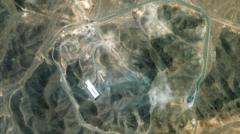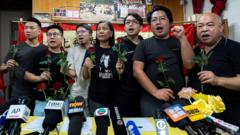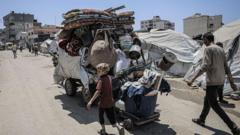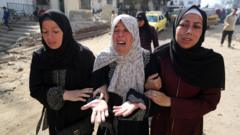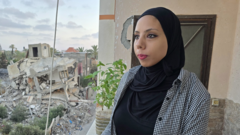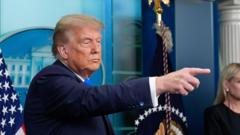The aftermath of violence leaves Tehran's citizens reflecting on their hopes for a peaceful future against a backdrop of escalating tension between Iran and Israel.
Tehran on the Edge: A City Torn Between Resilience and Fear
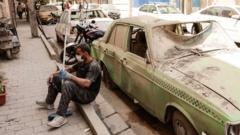
Tehran on the Edge: A City Torn Between Resilience and Fear
Amidst turmoil, Tehran's spirit fights back while its residents grapple with uncertainty after recent conflicts.
In the heart of Tehran, the Boof cafe has become a symbol of resilience amidst chaos, serving iced Americano coffees on a hot day in a city still reeling from conflict. Nestled in the shadow of the long-closed US embassy, the cafe's high cement walls—adorned with anti-American murals—speak to a fraught history, born from the 1979 Iranian revolution and the subsequent hostage crisis which continues to influence Iran's relationship with America.
Inside, Amir, the barista, reflects on the impact of US sanctions on local businesses, expressing a desire for improved diplomatic relations. He watches as patrons, a mix of traditional and modern dress, represent the diverse fabric of Iranian society—albeit against the backdrop of strict rules that affect clothing choices for women. This juxtaposition embodies the city's struggle for identity while confronting uncertain political tides.
Just a short distance away, Iran's state TV station IRIB struggles to recover from an Israeli missile strike that devastated their compound. After the June 16 assault, which resulted in extensive damage, Chief Ayatollah Ali Khamenei's recorded speech echoed a common sentiment among officials: a warning against foreign interference. The broadcast occurs amidst heightened tension and fear among the populace, with memories of recent violence lingering.
Nurse Ashraf Barghi, stationed in the emergency department, expresses concern and fear for the future, particularly following the violent events surrounding Evin prison. Many wounded during Israel’s military operations have flooded into her hospital, adding to shared anxieties across Tehran—a city that is slowly reawakening but remains plagued by worry.
In the aftermath, the toll is significant—over 600 lives lost and thousands injured, as highlighted by government statistics. While daily life resumes superficially—traffic crawls back to urban roads and shops in the bazaars reopen—the emotional scars of conflict persist deeply within residents. Conversations with individuals like Mina reveal personal heartbreak and a sorrowful outlook for the future, even amid attempts to reclaim normalcy.
At a vibrant music concert near the Azadi Tower, individuals come together—a kaleidoscope of beliefs united by a mutual apprehension over their country’s trajectory. Amidst patriotic melodies, calls for greater freedoms and discussions of defiance against oppressive governance echo loud and clear.
As Tehran grapples with its identity, citizens are actively awaiting changes, driven by hopes for a future marked by peace and openness, even in the wake of chaos. Despite extraordinary challenges, their voices and aspirations remain a potent reminder of resilience in the face of uncertainty.

